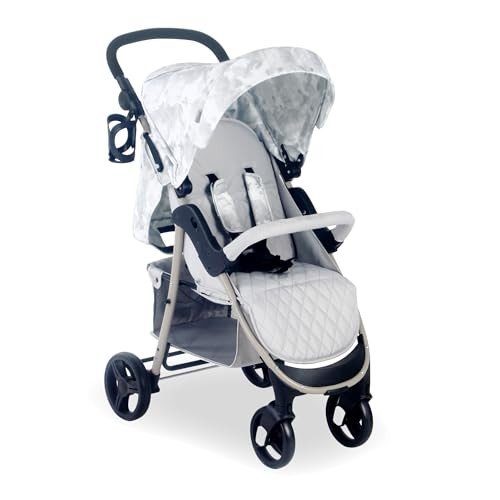The Reasons Pram Vs Pushchair Is Everywhere This Year
Pram vs. Pushchair: Understanding the Key Differences
When it concerns transferring infants and young kids, moms and dads often discover themselves overwhelmed by the numerous alternatives available. Among these options, prams and pushchairs are 2 of the most typical types of baby transportation. While the terms are typically used interchangeably, each has unique functions and benefits that accommodate varied parenting needs. In this post, we will explore the basic distinctions in between prams and pushchairs, helping parents make informed decisions about which is best matched for their household.
What is a Pram?
A pram, or perambulator, is a type of baby carriage designed mostly for newborns and babies. Prams normally feature a completely flat lying position, which is important for newborns who need to lie flat for back advancement. Most prams come geared up with a deep, enclosed body that offers a relaxing and safe and secure environment for the baby, frequently with additional features such as hoods or covers to shield them from the aspects.
Key Characteristics of Prams:
- Flat Lying Position: Supports healthy back development in newborns.
- Enclosed Design: Protects the baby from wind and sunshine.
- Conventional Aesthetic: Often made from products like wicker or fabric, offering a classic look.
- Weight and Bulkiness: Generally much heavier and bulkier than pushchairs.
What is a Pushchair?
A pushchair, also understood as a stroller or buggy, is designed for older infants and young children who can stay up unassisted. Pushchairs And Prams permit multiple seating positions, including reclining alternatives for naptime. They are usually lighter and more nimble than prams, permitting parents to navigate busy areas with ease. Lots of pushchairs feature adjustable handles, storage compartments, and can frequently be folded for practical transportation.
Secret Characteristics of Pushchairs:
- Seating Position: Designed for kids who can sit up, with different reclining positions.
- Lightweight and Compact: Easier to maneuver and transportation.
- Versatility: Many models are convertibles or can accommodate safety seat.
- Storage Features: Often include baskets for carrying diaper bags, toys, and so on.
Key Differences Between Prams and Pushchairs
Below is a relative table highlighting the important distinctions between prams and pushchairs.
Feature
Pram
Pushchair
Target Age
Newborns to 6 months (flat position required)
6 months to toddler age (sitting unassisted)
Design
Enclosed, traditional design
Open, contemporary design
Weight
Heavier, bulkier
Lighter, more compact
Seating Options
Flat only
Multiple positions including reclining
Manoeuvrability
Less maneuverable due to weight
Extremely maneuverable
Storage Space
Restricted
Generous beneath baskets
Picking Between a Pram and a Pushchair
Factor to consider Factors:
- Age of the Child: Choose a pram for newborns and a pushchair for older infants and toddlers.
- Meant Use: If you plan to do a lot of walking or navigating city streets, consider a model that suits your way of life.
- Area: Assess the offered storage in your home or vehicle and how compactly a design can fold.
- Budget plan: Consider the cost variety, as prams and pushchairs can differ commonly in expense.
- Features: Look for additional functions that might be beneficial for your everyday life, such as cup holders, canopies, or simple folding mechanisms.
Benefits and Disadvantages
Advantages of Prams
- Ideal for Newborns: Encourages healthy spinal column advancement.
- Comfy Space: Provides a relaxing environment for babies.
Downsides of Prams
- Weight: Heavier and bulkier, making them less useful for daily use.
- Minimal Use Time: Generally helpful just for the first six months.
Advantages of Pushchairs
- Versatility: Suitable for longer periods as the child grows.
- Light-weight Design: Easier to bring and maneuver.
Disadvantages of Pushchairs
- Not Suitable for Newborns: Requires the kid to be able to stay up unassisted.
- Less Protective: Generally more exposed than a pram.
Regularly Asked Questions (FAQs)
1. Can I utilize a pushchair for a newborn?
Most pushchairs are not designed for newborns; however, lots of designs include baby cars and truck seat adapters. Some pushchairs offer a totally reclining seat choice that might be suitable for infants, but guarantee the producer validates it's safe.
2. Which is much better for travel?
Pushchairs are typically chosen for travel due to their lightweight and compact nature. They can often be folded easily for transport on public transportation and fit more easily in cars and truck trunks.
3. The length of time can I utilize a pram?
Prams are generally ideal for infants until they reach around 6 months of age or when they can support themselves in a seated position.
4. Exist hybrid designs readily available?
Yes, lots of producers produce hybrid models that can be converted from a pram to a pushchair depending upon the child's advancement stage.
5. What should I try to find when purchasing a pram or pushchair?
When acquiring, consider safety functions, ease of usage, sturdiness, weight, and storage. It's also advisable to test different designs for comfort before making a decision.
Picking in between a pram and a pushchair eventually depends upon the age of your child and your lifestyle choices. Comprehending their distinctions assists moms and dads make notified choices that cater to their household's requirements. Parents can take pleasure in the journey of being a parent by ensuring that their child's convenience and security are always prioritized, while also considering their own benefit and style.
